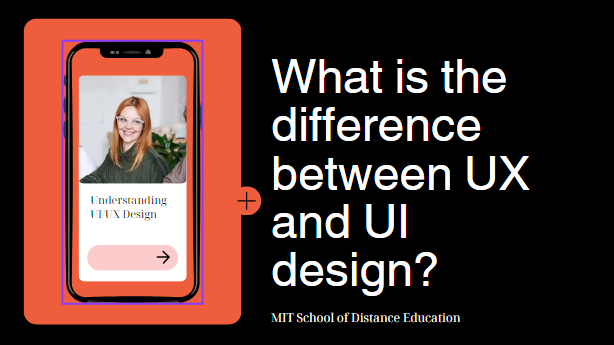
In this ever-evolving digital world, businesses are constantly taking effective steps to engage their audiences and stand out from the competition. So looking at the advancements technologies have made, providing consumers with the best user experience (UX) and user interface (UI) experience is a vital step for succeeding in one’s digital marketing strategy. It not only enhances customer satisfaction or boosts brand loyalty, but also helps in gaining a competitive edge in the industry. Usually, UX and UI are used correspondingly, but they hold different meanings and objectives. The UX and UI design is a way to make a smooth and delightful connection between the user and technology.
Understanding UX Design
User Experience ( UX ) refers to the experience that a person has while interacting with a
service or a product, such as a website, mobile app, or software. It involves understanding the
needs of a user, conducting research, and then creating intuitive and efficient interactions, that
eventually result in overall consumer satisfaction.
The 5 main elements of UX design are – strategy, scope, structure, skeleton, and surface. From
understanding the user’s need to setting the functional and content requirements, building the
interaction designs and architecture of information, then giving the design a visual form and then ending it with a layout of visuals, typography, styling, and colors, makes the design easy to use and navigate.
Understanding UI Design
Out of the overall experience of the user, UI design covers one specific aspect, that is
appearance, feel, behaviour and interactivity. It is the visual elements and design of the digital product. It is that presentation or layout that the user gets to see on their screen. A successful
UI design is the one that users choose to interact with.
UI design has 4 elements –
- Input controls: They allow users to input information in the system.
- Navigation components: They allow users to move around a product or a website.
- Informational components: They share information with users, such as pop-up windows, notification bars, etc.
- Containers: They hold related content together.
Key Differences Between UX and UI Design
The main differences between UX and UI design are as follows –
- The UX design focuses on how a user interacts with a product, whereas in UI design the
focus is on the visual aesthetics of the product. - In UX design, to define user flow and functionality, wireframes and prototypes are
created. And in UI design visual designs are finalized for user engagement. - The UX design focuses on ensuring a smooth user journey, whereas UI design focuses
on refining individual pages, buttons, etc., ensuring they are visually appealing and
functional. - UX design is a user-centered approach and UI design is an interface-centered approach.
Why Both UX and UI Are Important for Your Product
We just had a view over the differences between UX and UI design, but they both play a crucial role in designing and developing digital products. It would be impossible to have one without another. A well-formulated UX and UI design not only enhances the appearance of the product but also boosts user satisfaction. For businesses, this would increase user engagement along with higher conversion rates. Exceptional UX and UI designs would set you apart from the competition and would foster customer retention.
UX and UI design services are really important for a business to bloom, they are essential for a business to succeed in the digital world. If you are searching for a UI UX institute in Jaipur or
the best UI UX courses in Lucknow, join us at MIT – School of Distance Education, approved
by AICTE, Govt. of India.
UX/UI design is an in-demand field, and an Advanced Certificate in UX/UI course will help you with the right skill set, expanding your career prospects from marketing to web designing. Get onto the journey of a successful career with us at MITSDE, continue exploring the world of design, and secure your place in the job market. For more information visit the website.



